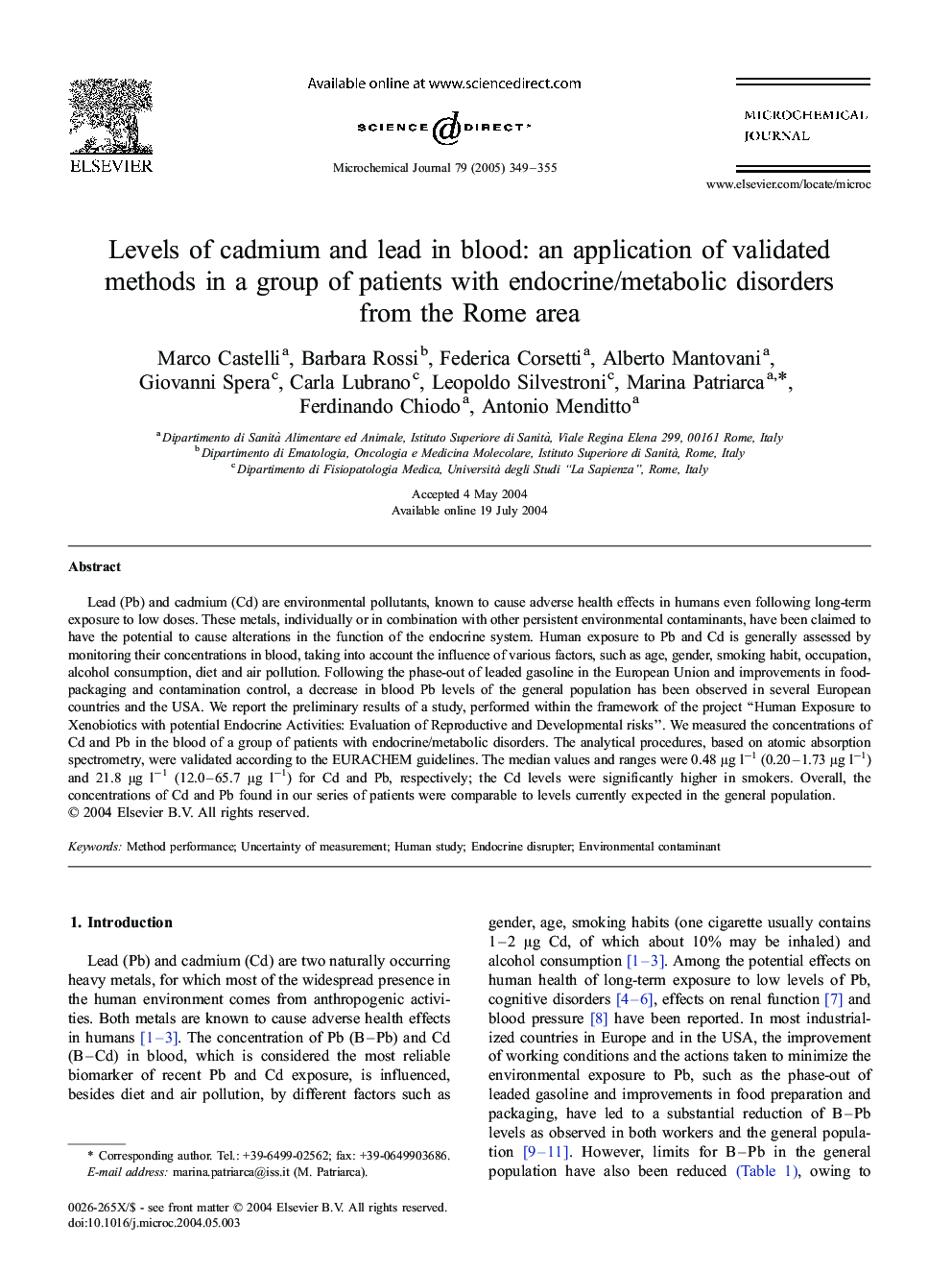| Article ID | Journal | Published Year | Pages | File Type |
|---|---|---|---|---|
| 9755056 | Microchemical Journal | 2005 | 7 Pages |
Abstract
Lead (Pb) and cadmium (Cd) are environmental pollutants, known to cause adverse health effects in humans even following long-term exposure to low doses. These metals, individually or in combination with other persistent environmental contaminants, have been claimed to have the potential to cause alterations in the function of the endocrine system. Human exposure to Pb and Cd is generally assessed by monitoring their concentrations in blood, taking into account the influence of various factors, such as age, gender, smoking habit, occupation, alcohol consumption, diet and air pollution. Following the phase-out of leaded gasoline in the European Union and improvements in food-packaging and contamination control, a decrease in blood Pb levels of the general population has been observed in several European countries and the USA. We report the preliminary results of a study, performed within the framework of the project “Human Exposure to Xenobiotics with potential Endocrine Activities: Evaluation of Reproductive and Developmental risks”. We measured the concentrations of Cd and Pb in the blood of a group of patients with endocrine/metabolic disorders. The analytical procedures, based on atomic absorption spectrometry, were validated according to the EURACHEM guidelines. The median values and ranges were 0.48 μg lâ1 (0.20-1.73 μg lâ1) and 21.8 μg lâ1 (12.0-65.7 μg lâ1) for Cd and Pb, respectively; the Cd levels were significantly higher in smokers. Overall, the concentrations of Cd and Pb found in our series of patients were comparable to levels currently expected in the general population.
Keywords
Related Topics
Physical Sciences and Engineering
Chemistry
Analytical Chemistry
Authors
Marco Castelli, Barbara Rossi, Federica Corsetti, Alberto Mantovani, Giovanni Spera, Carla Lubrano, Leopoldo Silvestroni, Marina Patriarca, Ferdinando Chiodo, Antonio Menditto,
